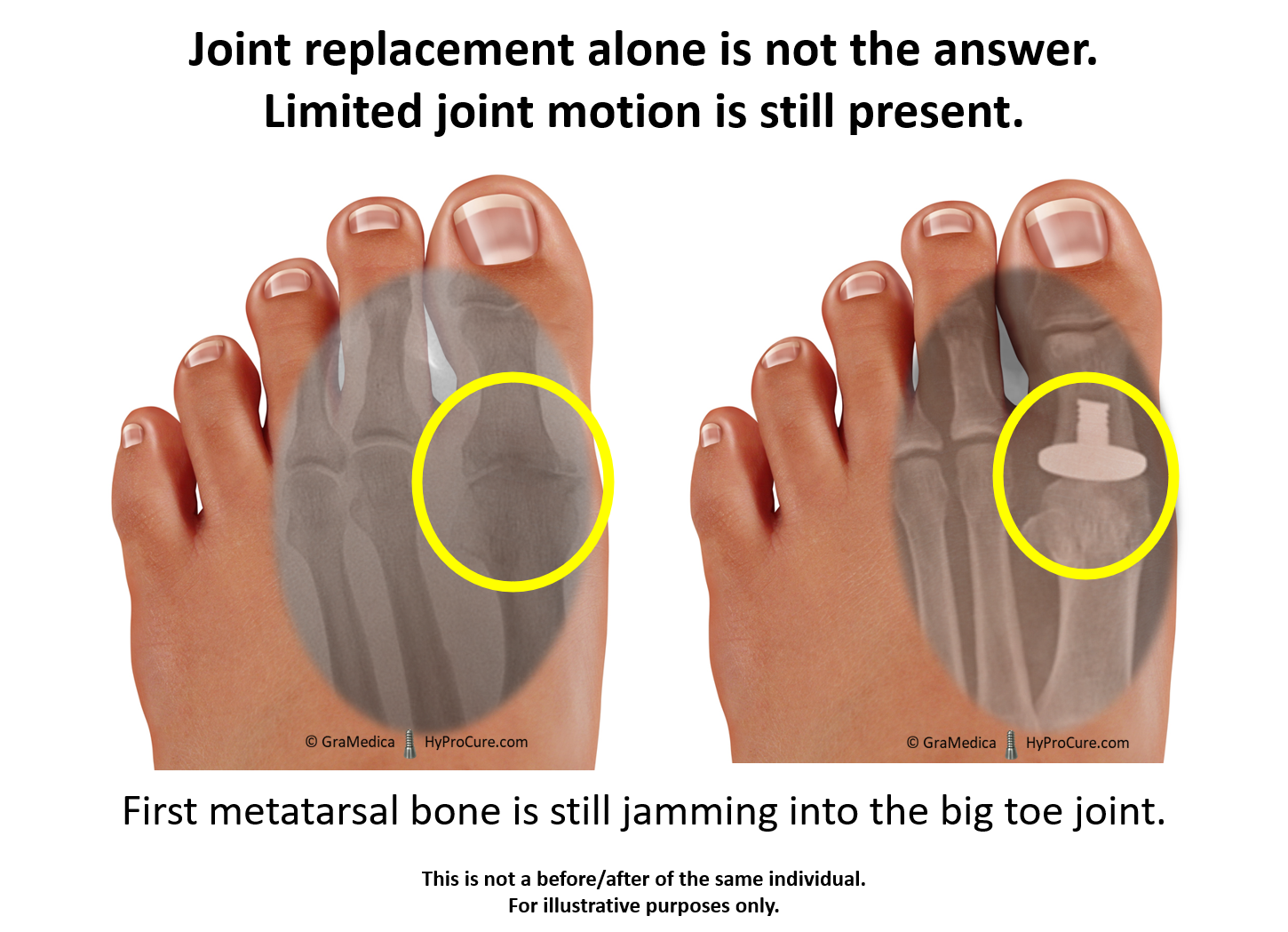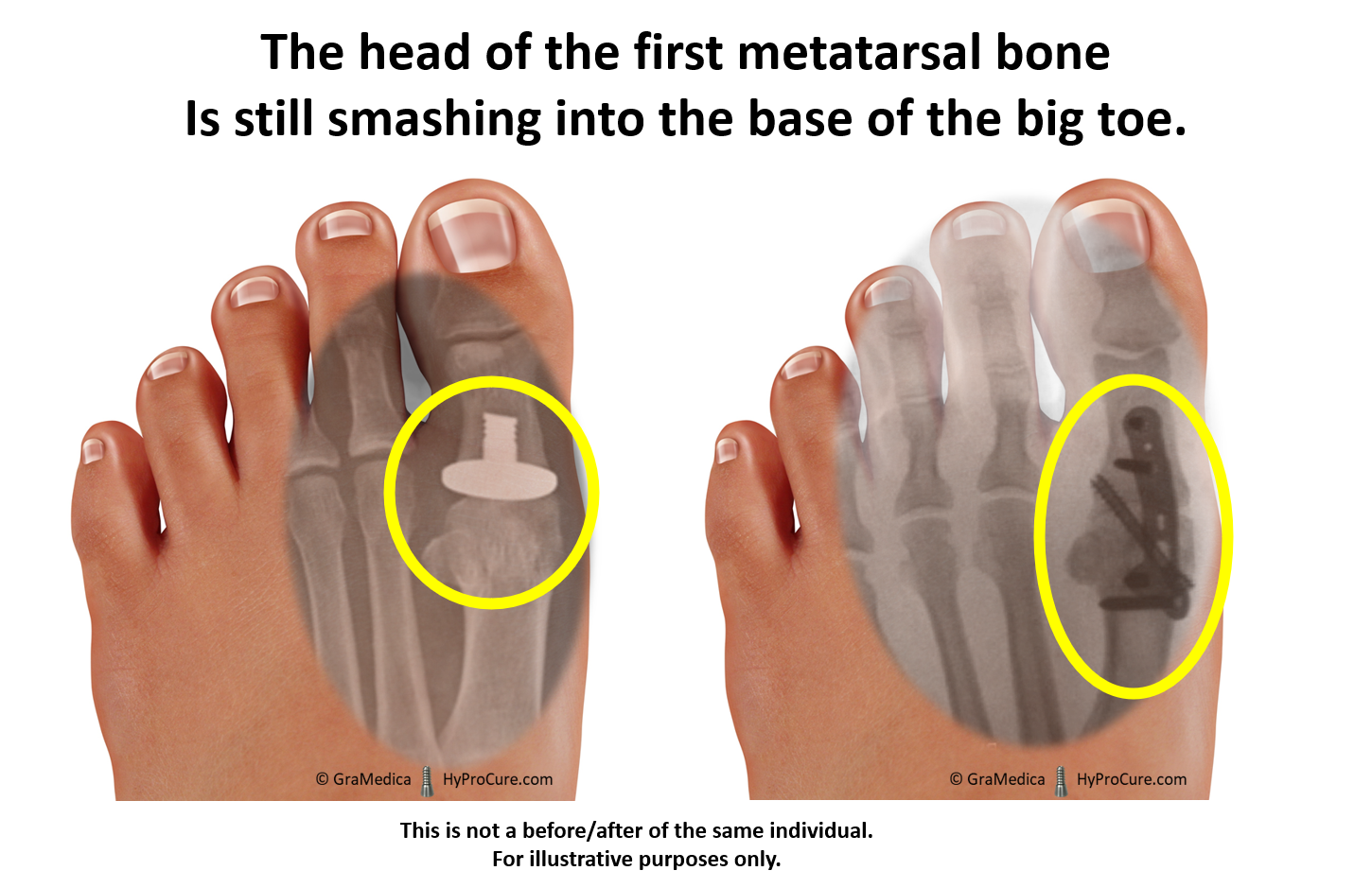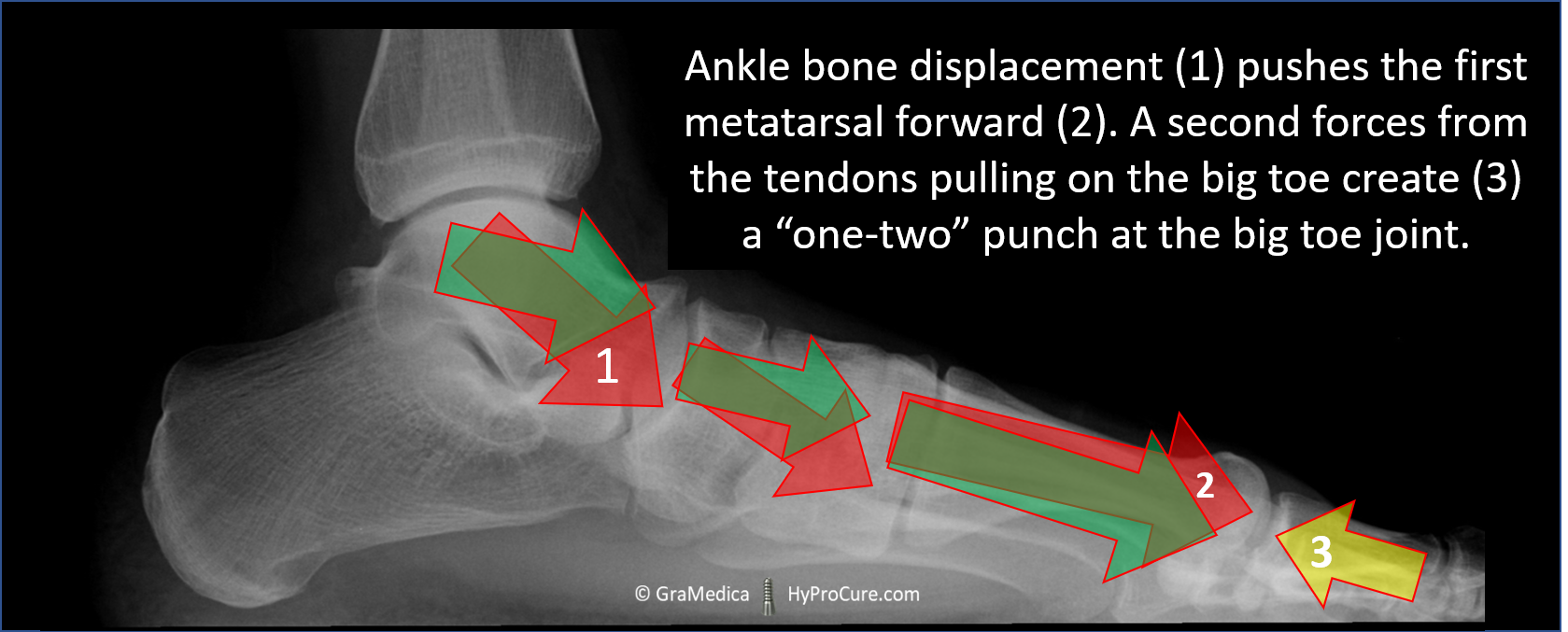Big toe joint pain – limited / painful motion (Hallux Limitus / Rigidus)
This is a common condition within the big toe joint that restricts the normal amount of motion.
The big toe is medically called the hallux. When a joint loses its normal amount of motion but still has some motion present that is called limitus. Rigidus is the descriptive term to mean that all motion is lost within the big toe joint. The disease process of the big toe joint is pretty much an arthritic condition where the cartilage is worn away from “wear-and-tear”, that’s of course assuming there was no acute trauma. We are going to discuss the most common cause of this deformity.
What is the best treatment?
Putting anti-inflammatory medicine, steroids, into the big toe joint won’t help anything either because the mechanical source of the inflammation is still there. Many other “promising” substances can be injected into the big toe joint. Just remember that until the ankle bone dislocation is fixed, those other treatments will be ineffective long-term.

Eventually, the pain is so bad that surgery seems to be the only, and hopefully, last option. There are many different types of joint replacement implants for the big toe joint. Hemi implants work to resurface one side of the joint. There are total implants that replace both sides of the joint. These devices seem to work great in the operating room, but what happens when the person stands and starts to walk? Well, that great result in the operating room doesn’t really work because the joint replacement focused on removing the diseased cartilage, but it did nothing to solve the underlying cause. The excessive abnormal forces are still attaching the big toe joint. Doctors need to consider that big toe joint disease is a mechanical issue. If you don’t fix the altered mechanics, then how can one expect to have a good outcome?

When the partial or total joint implants fail, surgeons will “fix” it by completely removing the big toe joint and fusing the big toe to the metatarsal. There was a reason why the big toe joint bends at the big toe joint and not within the big toe itself. Eliminating the motion of the big toe alters the forefoot mechanics. Plus, excessive ankle bone motion is still there. The ankle bone continues to partially dislocate with every step.

The first place to initiate treatment is to remove the underlying cause of the symptom. If you have pain in your heel from a nail that you stepped on, it makes sense that you first pull the nail out of your heel. Why would you take pain medicine or put some padding around the nail? Every step is pushing the nail deeper into your flesh. If big toe joint disease is associated with a partially dislocating ankle bone, then that ankle bone needs to be stabilized. External measures are not proven to stabilize and maintain the alignment of the ankle bone. The best method to stabilize and maintain the alignment of the ankle and heel bones is to insert a titanium spacer into the sinus tarsi (HyProCure). This soft tissue procedure instantly reduces/eliminates the first metatarsal from being jammed into the base of the big toe.
HyProCure prevents the ankle bone from sliding forward. The results can be seen instantly, depending on how much damage has occurred to the big toe joint. If caught early enough, the only surgery needed is to stabilize the ankle bone. If there is significant damage at the big toe joint, then additional surgery may be required.



HyProCure is truly the answer to big toe joint disease. It is possible to have that disease prevented from getting progressively worse or maybe even allow the body to heal from the repeated, and never-ending micro-trauma within the big toe joint.
What happens if you don’t treat big toe joint disease?






